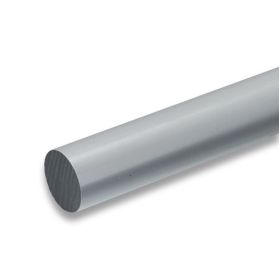Polymethylmethacrylate (PMMA)
Material properties of polymethylmethacrylate (PMMA)
PMMA is one of the oldest thermoplastics. Its structure is amorphous. A distinction must be made between the high-molecular "cast" acrylic glass and PMMA moulding compounds for extrusion. The sheets, blocks or mouldings produced from methacrylic acid methyl esters in monomer casting cannot be melted down due to their extremely high molecular weight, but can be thermoplastically thermoformed. Polymethyl methacrylates have the highest optical properties of all plastics. They are mainly used for optically demanding glazing.
The optical properties of acrylic glass are comparable to those of window glass on silicate base comparable. The highest quality grades are produced in the casting process (for plates and optical mouldings).
The high hardness and high modulus of elasticity of PMMA result in a high stiffness, which is particularly advantageous for glazing applications. However, the acrylic glass loses a certain impact strength, which is often expressed in stress concentrations in crack formations. Also the notch sensitivity is not to be underestimated. In addition, stresses are also built up by machining or local heating.
PMMA-XT
PMMA-XT is available as a standard or impact modified type, as smooth, structured or matt or satinised sheets, tubes and rods. Coloured grades are usually completely evenly coloured.
PMMA-GS
The cast grades have excellent optical properties and are available in larger dimensions than the XT grades. PMMA-GS is produced in the form of sheets, blocks, rods and tubes with smooth or matt or satin surfaces.

